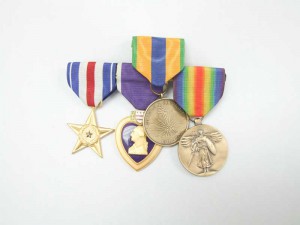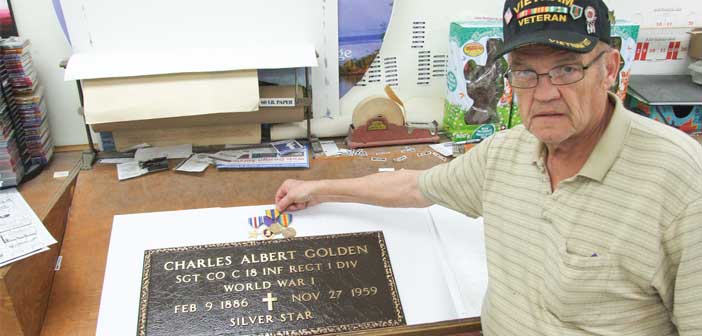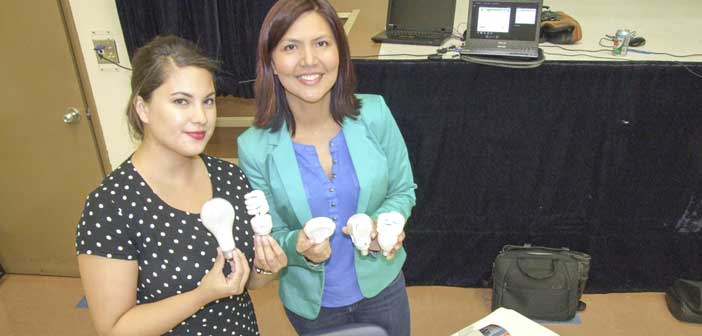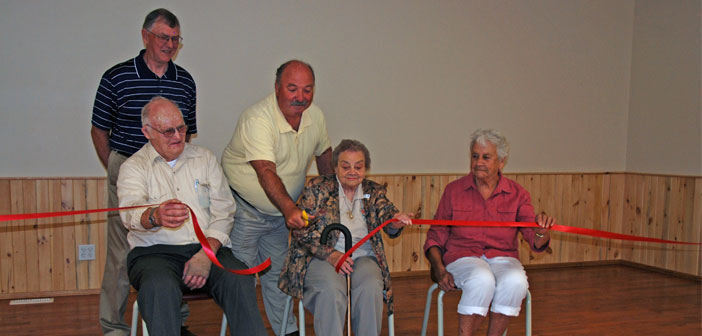MANITOULIN—The late Charlie Albert Golden was by all accounts a shy and quiet man, one whose experiences of war left him with deep scars within. Like many veterans who had seen far too much of the horror man inflicts upon his fellow man, Charlie Golden was a veteran who had seen conflict through two wars as a member of the US Army, he rarely talked about his wartime service.
So when Wayne Golden of Massey began digging into his uncle Charlie’s service record, he was in for quite a few surprises.
“Uncle Charlie served in the same outfit as me,” said the younger Mr. Golden, himself a Vietnam veteran whose service was in the US Army First Division, the storied Big Red One.
Mr. Golden had stopped by The Expositor office bearing the brass military marker he had spent the last few years fighting to obtain on behalf of his uncle and his uncle’s military medals—including the Silver Star.
All this Mr. Golden was already aware of, but as he dug deeper into his uncle’s service he discovered that his uncle was in a cavalry regiment that was among the progenitors of the First Division, as units with military experience along the Mexican border were knit together into the US military’s expeditionary force to Europe in 1917.
“The fellow I was talking to going through the records spotted it,” said Mr. Golden. “He told me that uncle Charlie’s unit was one of those that went after Pancho Villa.”
Pancho Villa, born José Doroteo Arango Arámbula in 1878, was a prominent Mexican revolutionary general who raided Columbus, Ohio in 1916, killing 18 US soldiers.

revolutionary icon Pancho Villa.
General John (Jack) Pershing chased Pancho Villa across the length and breadth of Mexico for nine months following that attack, which was only broken off when America’s entry into the World War One began.
Charlie Golden’s outfit was one of those that went on to the trenches and killing fields of Europe, suffering the first US casualties of the war.
Mr. Golden plans to have a service take place at his uncle Charlie’s gravesite in the Anglican Cemetary in Little Current this summer.
“The US Army is going to send up an honour guard for the placement,” said Mr. Golden.
Although Mr. Golden had entered the ranks as an apprentice cook, he soon climbed the ranks to a lead combat role, first as a corporal and then as a sergeant. It was as a sergeant that on March 18, 1918 Mr. Golden was first cited for bravery in the Ansauville Sector (near Arras, France), capturing large numbers of enemy combatants.
The citation for the Silver Star awarded to Charlie Golden reads “Sergeant Charles Golden, Company C, 18th Infantry was on of a patrol of three men who stampeded a strong enemy patrol by pistol and grenade fire.”
“I hope to have the marker in place sometime in June,” said Mr. Golden.





